Chapter 1: Itinerary Design: 3-Day Itinerary to Avoid Crowds
Day 1: Classic Introduction to the 3D Mountain City
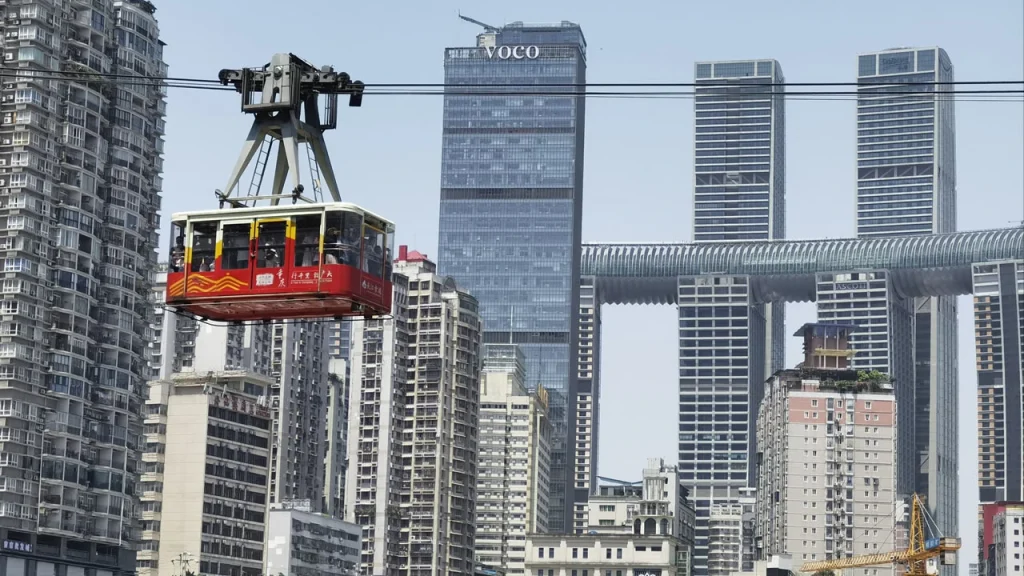
Morning: Start your magical journey at Baixiangju Residential Complex. This 24-story, elevator-free apartment block has been a filming location for numerous movies. Navigate to “Pangge Noodle Shop” and wander through its labyrinthine corridors. On the 12th-floor rooftop, capture the iconic view of the Yangtze River Cable Car framed by the Raffles City skyscrapers (Best time: 10:00-12:00 when cable cars operate). Local insight: The maze-like staircases might disorient you – ask a local auntie for directions to find this hidden gem. The mundane details, like vintage mailboxes and laundry lines, tell a more authentic story than any staged Instagram photo.
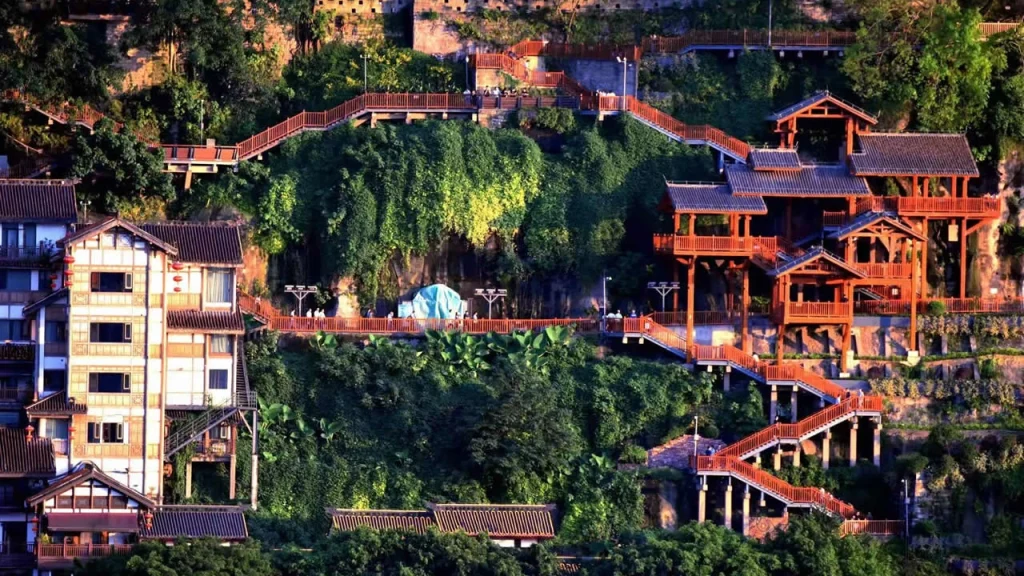
Afternoon: Walk to Shancheng Steps, entering from the Qixingang Consulate Lane entrance. Stroll downhill to immerse yourself in old Chongqing’s charm. We recommend ordering a bowl of 盖碗茶 (cover-bowl tea) at the Shancheng Time Memories Bookstore, sitting by the riverside, and waiting for the Jialing River sunset. Pro tip: The latter half of the trail is heavily commercialized, so stick to the upper section for an authentic experience.

Night: Head straight to Hongya Cave, but avoid the ground-floor crowds. Enter via the alley beside “Yudandan Hotpot” on the Daijia Lane Steps side for a close-up of the cave’s side lighting interplay with cliffs. Pro tip: The 25-minute walk to Qiansimen Bridge might strain some – consider the Great Theatre Riverbank spot instead (navigate to “Baoding Gate”).
Day 2: Where Art Meets Local Life
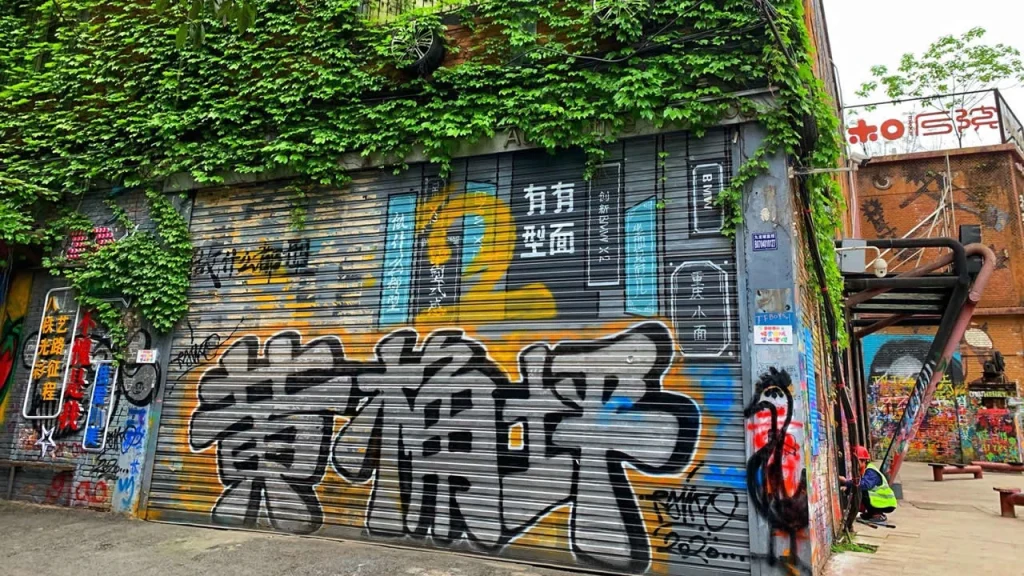
Morning: Explore Huangjueping Graffiti Street, where avant-garde murals coat the exterior walls of Sichuan Fine Arts Institute. For an authentic taste of old Chongqing, visit Jiaotong Teahouse – order a pot of tuocha (bowl-pressed tea) paired with guaiwei hudou (spicy-sweet broad beans), and watch elderly locals play Chinese chess, a serene contrast to the street’s bustling influencer crowds.
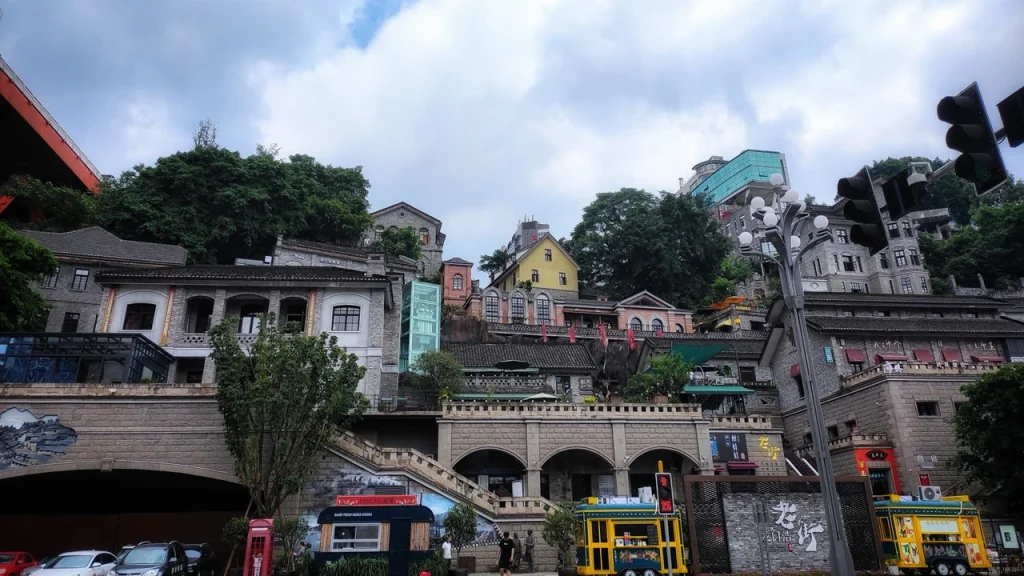
Afternoon: Head to Longmenhao Old Street to escape the Hongya Cave-style crowds. Capture the Dongshuimen Bridge framed by the light rail at the “Already Downhill” hotel’s “Mountain City Frame” photo spot (tip: use the alley beside the hotel’s parking lot). Personal discovery: Tucked deep in the old street, Longmen Academy houses a library renovated from a Republican-era building – serene and virtually crowd-free.
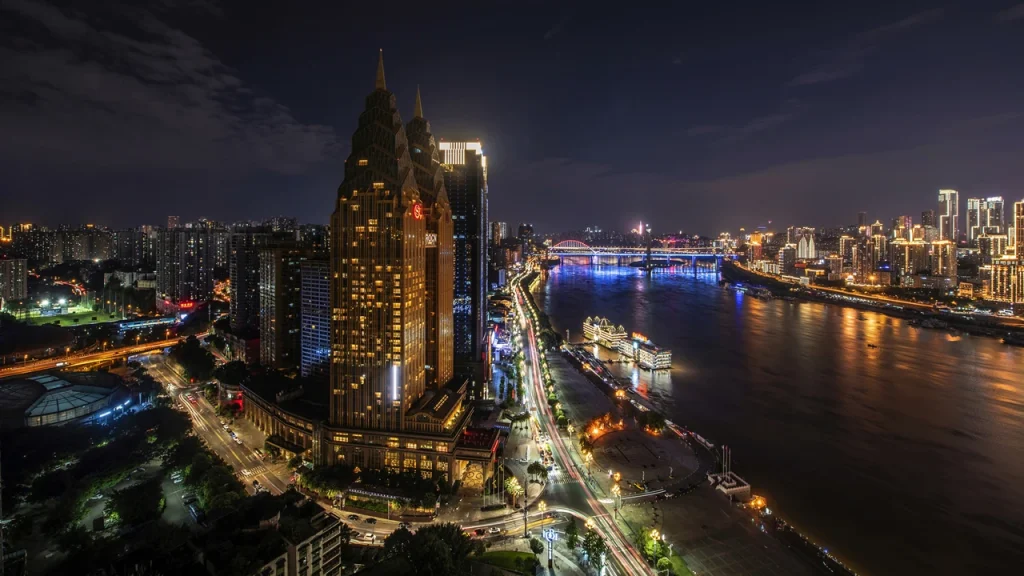
Night: Unlock a local’s hidden gem – the Nanbin Road night cruise. Take the Two Rivers Xiaodu Ferry (¥15/person) from Hongya Cave to Danzishi Pier, then stroll along the river to Huguishi Flower Terrace Park. The octagonal pavilion offers a stellar vantage point to frame both Raffles City and the Yuzhong Peninsula skyline – a more dynamic view than the crowded “One Tree Hill” lookout.
Day 3: Escaping the City for Natural Wonders
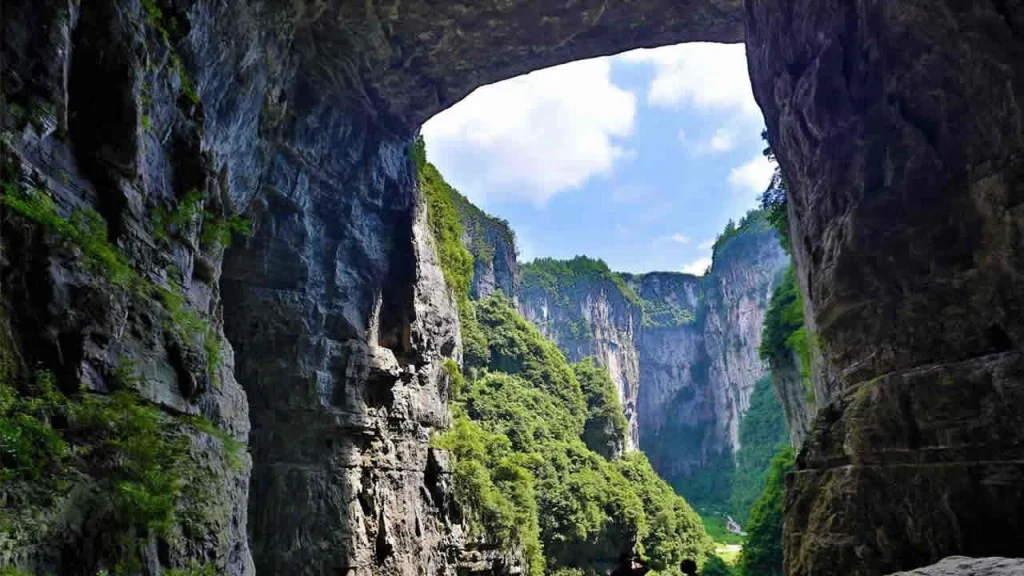
Wulong Tiankeng Day Trip: Opt for a 6-person small group tour (≈CNY 400/person) to fully experience the awe of Tiansheng Sanqiao (Three Natural Bridges). Personal take: The martial arts ambiance at Tianfu Guanyi Post Station exceeded expectations, but the Earth Crack Scenic Area demands sturdy non-slip shoes due to slippery trails. Pro tip: Skip the overpriced “Tujia Smashed Rice Wine” performance inside the park – prioritize photography time for the jaw-dropping landscapes instead.
Chapter 2: Curated Food Guide: Authentic Eats Beyond the Trendy Spots
- Hot Pot
Skip the notorious long queues at “Pei Jie” or “Pei Sister” – Dongting Hot Pot (Air-Raid Shelter Branch) offers a far more unique experience. Dine inside a historic air-raid shelter, where beef tripe sizzles in broth as steam mingles with the aroma of Sichuan pepper. Surreal vibe: The dripping cave walls and fiery red broth create an unforgettable sensory spectacle. Caution: The spice level here is intense – order “mild” with a double-flavor broth and pair with chilled liangxia (sweet rice jelly drink) to cool your palate.
- Xiaomian (Spicy Noodles)
Nestled near Jiaochangkou Subway Station, Lao Qiuqiu outshines trendy “stool noodles” spots with its authentic flavors. The owner insists on hand-kneaded noodles – try the wanza mian (minced pork and pea noodles) topped with a soft-boiled egg. The magic lies in the thick, viscous sauce that clings to every strand, a testament to culinary craftsmanship over hype.
- Street Snacks
At Liandangku Tofu Pudding & Beef in Qixingang, a set of douhua fan (tofu pudding with rice) costs just ¥5. The silken tofu pairs perfectly with their housemade chili oil dip – a flavor explosion. Local vibe: Even at midnight, taxi drivers crowd the shop, their laughter and clinking bowls creating a raw, unfiltered slice of Chongqing nightlife.
Chapter 3: Practical Tips
- Transportation: The metro is more reliable than taxis! For the Liziba “train-through-building” view, hike downhill from Eling Erchang (15-minute walk) – going uphill will leave you breathless. Skip the overpriced “Two Rivers Night Cruise” pushed by cabbies; opt for the ¥30 nostalgic ferry instead.
- Photography: At Hongya Cave, shoot 10 minutes before lights-out (≈22:50) – security will start clearing crowds, leaving you prime access. The Baixiangju corridor suffers harsh backlight in afternoons; shoot at dawn or on cloudy days.
Chapter 4: Hidden Gems
- Explore Old Air-Raid Shelters: At Jun Ge Bookstore (Air-Raid Shelter Branch) in Yuzhong, hunt for rare Chongqing history books while sipping ¥5 Kuding tea. The owner’s tales of the “Third Front construction” era add layers of context – a far richer experience than any Instagram-famous bookstore.
Epilogue
Chongqing’s magic lies not just in its geography, but in the vitality where old and new collide. Ditch the cookie-cutter photo ops – savor hot pot in a cave, listen to mahjong tiles clack in a century-old teahouse, and feel the mountain breeze in a deserted Hongya Cave at midnight. This is how you truly unlock the city’s soul.

Leave a Reply